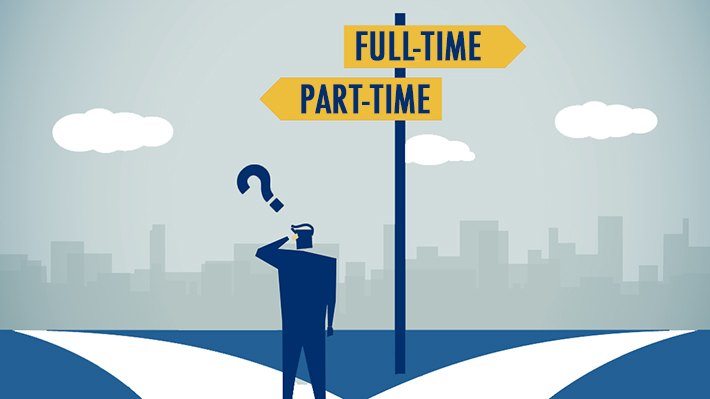
Companies hire regular full time VS part time employees in order to carry out essential duties to make the organization thrive. Full-time employees generally work eight hours a day, five days a week. Most of the time, full-time workers are eligible for certain benefits, including healthcare coverage and paid vacation days. Part-time employees usually work a minimum of 20 hours a week but no more than 30.
A full-time job is employment in which a person works an unfixed number of hours or it may define as such by their company criteria. Full-time employment often comes with benefits that are not typically offered to part time, temporary staff or flexible employees such as annual leave, sick leave and health insurance.
In today’s scenario no one has time to fulfill all the requirements of the company with in the given time frame. So, we at MME are top full time recruitment consultants in India, contractual/ part time recruitment consultants in India who brings the best talent to the top most leading companies throughout the world. We filter out candidates who are promising to be the top engineers of the future. We have pool candidates who excel in producing, managing, handle all tasks from different segments. And, we also have a few who are aware of the latest technologies accessible in the market.
Some points given below of both full time VS part time employees-
Working hours
Companies often keep their full-time employees in a range of 32-40 hours per week. Some industries require more than that, and salaried employees may find themselves working longer hours. For full-time workers, these hours remain constant. Alternatively, part-time workers stay on-site for fewer hours and their time spent at work may fluctuate week by week.
Working schedule
Barring remote positions, full-time work often leaves little room for flexibility. The agreed-upon schedule remains the same throughout the duration of employment. Full time VS Part time employees positions are malleable and fit around an individual’s schedule.
Ease of scheduling
It can be easier to schedule meetings when you know all your staff is working the exact same hours. Of course, if you have full-time employees who are remote or in various time zones, this may not be the case.
More work hours per person
The primary reason people hire full-time employees is time and ease. Every job requires a set number of hours to complete, and many employers would rather employ one full-time person than two part-time people.
Pay scale
Full-time employees either earn their pay by the hour or through a flat salary. Part-time employees are often paid by the hour only. Overtime pay becomes an asset to hourly employees, allowing them to work extra hours for additional pay. Even with this distinction, full-time employees often make more than part-time employees with extensive room for growth.
Loyalty
Employers often view full-time employees as more committed to the company and less likely to job-hop than contractors or part-time workers. While this may or may not be true in practice, the perception persists.
Benefits
Full-time positions usually come with additional benefits that part-time roles are not eligible for. In the U.S., it is required that organizations offer insurance if they have 50 or more employees. In this case, a part-time individual may also earn benefits.
Benefits or compensation packages are offered to employees as additional payment for their effort. Some examples of benefits include:
- Perks
- Family leave
- Medical, sick leave
- Worker’s Compensation



